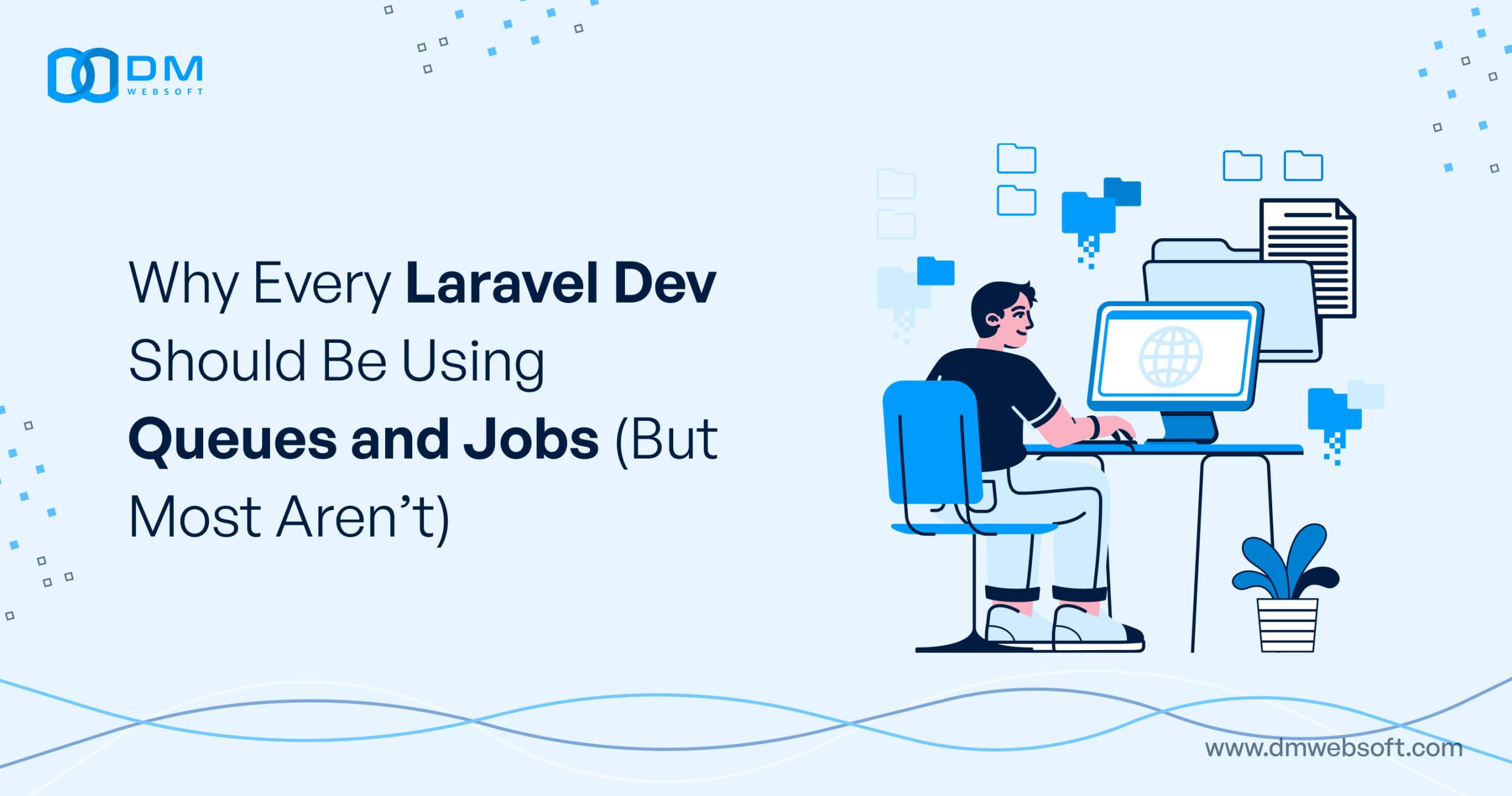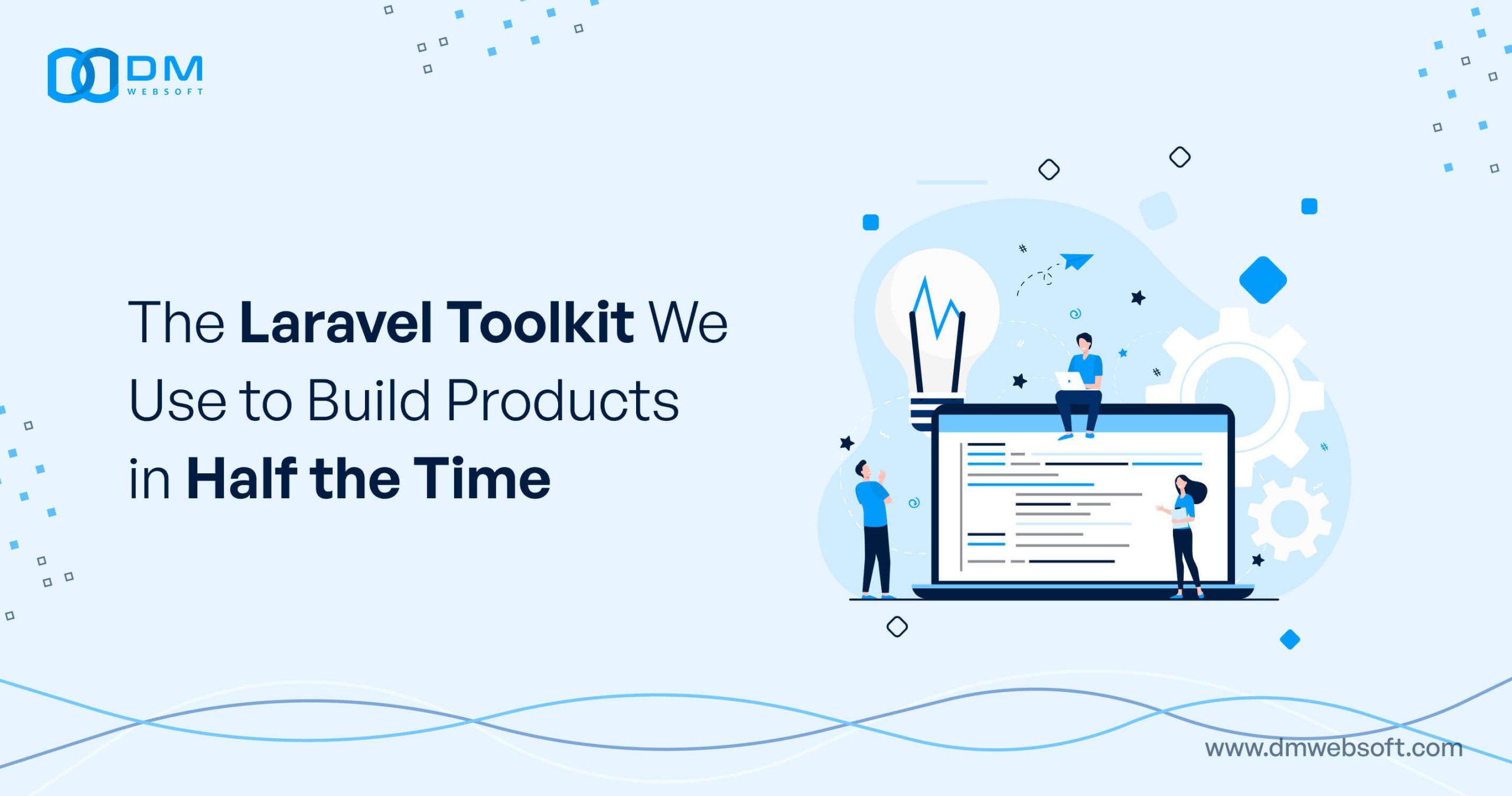DM WebSoft LLP exceeded our expectations! Their seasoned team of experts delivered a website that perfectly captures our brand essence. Their 15+ years of experience truly shine through in their exceptional web development skills.
Data Privacy in the Age of AI: Balancing Innovation and Security

TABLE OF CONTENT
Introduction
Dimension #1: Privacy-by-Design in AI Development
Dimension #2: Data Governance Frameworks for AI Applications
Dimension #3: Technical Privacy Safeguards in AI Systems
Dimension #4: Ethical AI Use and Privacy Transparency
Dimension #5: Regulatory Compliance and Cross-Border Data Considerations
The Balanced Approach: Privacy as an Innovation Enabler
The Role of Data Governance in AI Privacy Management
The Importance of Transparency and Accountability in AI Privacy
Conclusion: Building Privacy-Forward AI for Sustainable Innovation
Get in Touch
Introduction

In the modern data-driven economy, artificial intelligence has never been more promising for driving innovation, productivity, and competitiveness. But as businesses increasingly come to depend on AI systems that gather, analyze, and act on enormous amounts of personal data, they are also confronted with mounting privacy issues affecting consumer trust, regulatory risk, and in the end, their bottom line. The fine line between leveraging data for AI innovation and safeguarding the privacy rights of citizens has emerged as one of the biggest business challenges of our times.
Recent research presents a concerning snapshot: 87% of consumers worry about how companies use their personal information, yet just 25% feel that companies manage their information responsibly.In contrast, companies that fail to put in place robust data privacy processes risk higher regulatory penalties, as international privacy fines increased by 45% alone in the last year. This kind of tension between the necessary requirements for innovation and privacy demands poses a tough strategic challenge to firms that are visionary in their orientation.
We at DM WebSoft LLP help companies in this challenging situation by developing AI solutions that achieve the highest amount of potential for innovation while still maintaining strict privacy safeguards. In this blog post, we will examine five of the most important features of the AI privacy environment, offering actionable information that allows your business to have the optimal balance between technological advancement and data security.
Dimension #1: Privacy-by-Design in AI Development

The secret to effective AI privacy management is beginning with the inclusion of privacy principles into the development process from the outset. Privacy-by-design is a forward-thinking approach that integrates privacy considerations across the entire AI development lifecycle rather than dealing with them as an afterthought or list of compliance items.
One of the greatest advantages of privacy-by-design is that it assists in the identification and solving of privacy threats prior to their realization as actual problems. By having privacy guide AI development from the very outset, designers can make architectural decisions that inherently restrict data exposure and optimize privacy guardrails. It generally decreases rework due to privacy concerns by 30-40% in comparison to backward-looking privacy deployment.
The privacy-by-design approach includes a number of important practices. Data minimization simply means that AI systems harvest and store only the particular elements of data necessary to carry out their function. Purpose limitation restricts the use of data to expressed purposes on which it was collected. Privacy impact assessments examine systematically likely privacy risks at all stages of development, and anonymization and pseudonymization techniques reduce the identifiability of personal data.
AI systems developed with privacy-by-design principles demonstrate measurably enhanced performancein several areas. Studies show they have 45-60% fewer privacy events, need 25-35% less remediation effort when privacy events do occur, and produce much higher user trust scores. In addition, these systems generally gain regulatory approval more quickly and encounter fewer compliance challenges when expanding into new markets.
In spite of these benefits, most organizations still view privacy as a compliance exercise, not a foundational design principle.
This reactive response not only enhances privacy risks but also unfairly generates substantial inefficiencies because retrofitted privacy measures added to existing AI systems have a cost of 4-6 times over adding them as part of initial development.
At DM WebSoft LLP, we apply systematic privacy-by-design practices to all AI development projects. Our methodology includes ongoing privacy risk analysis, automated privacy checking, and thorough documentation of privacy choices throughout the development cycle. Customers deploying our privacy-by-design methodology generally decrease privacy incidents by 50-65% and speed up time-to-market for privacy-compliant AI solutions by 20-30%.
Dimension #2: Data Governance Frameworks for AI Applications

As AI increases in sophistication and data-intensive nature, having robust governance structures becomes imperative to manage innovation potential vis-a-vis the privacy obligations. Strong data governance provides systematic responsibility for how private data is gathered, stored, processed, and eventually discarded along the course of AI activities.
The foundation of AI data governance is comprehensive mapping and classification of data. Organizations must maintain detailed inventories of what personal data they have, where it resides, how it flows through AI systems, and what privacy sensitivities it possesses. Research shows that organizations with well-established data classification systems experience 40-50% fewer unauthorized data exposures and can respond to privacy incidents 60% more quickly than organizations that lack these systems.
Governance frameworks should also establish clear accountability structures for privacy decision-making. This involves establishing explicit roles and responsibilities for privacy management, having approval processes for high-risk data processing, and creating audit trails that document privacy-related decisions. Organizations that have established privacy accountability systems are 35-45% more compliant with regulations and are more responsive to changing privacy expectations.
Another key element is the use of granular access controls that limit data visibility to legitimate business need. By enforcing least-privilege principles rigorously, organizations reduce the risk of misuse by insiders with minimal effect on AI capability.Detailed governance models include dynamic access controls that evolve based on context, risk, and changing requirements within the organization.
Perhaps most importantly, robust governance frameworks institute continuous monitoring of AI systems through privacy-focused monitoring and auditing. Regular privacy audits, automated data-use monitoring, and proactive anomaly detection allow organizations to identify potential privacy issues before they become outright incidents or regulatory violations.
At DM WebSoft LLP, we help clients adopt end-to-end AI data governance models tailored to their organizational contexts. Our approach brings people, processes, and technology together to craft future-proof systems of privacy management that evolve alongside increasing AI capabilities. Organizations adopting our governance models have typically seen 40-55% improvements in regulatory compliance scores as well as a 25-35% reduction in privacy-driven operational resistance, enabling more effective privacy protection as well as efficient AI innovation.
Dimension #3: Technical Privacy Safeguards in AI Systems

In addition to governance and design principles, certain technical safeguards are also essential for ensuring privacy in AI systems. These technologies offer tangible methods for data processing with minimal privacy risks and analytical capacity preservation.
Differential privacy has proven to be a highly effective technical method for AI applications. This mathematical technique introduces carefully weighted noise to data sets or query outcomes, offering provable privacy assurance while retaining statistical accuracy for AI analysis. Differential privacy implementations can lower privacy risk by 70-85% while sustaining analytical precision within 3-7% of outcomes from non-protected data, which has made it ever more precious in the context of privacy-sensitive AI applications.
Federated learning is yet another privacy innovation, allowing AI models to be trained on decentralized data without compelling that data to leave its original location. By bringing the algorithm to the data rather than centralizing sensitive information, federated learning can reduce privacy exposure by 80-90% compared to standard centralized approaches.
The approach is especially valuable for AI use in healthcare, financial services, and other highly regulated industries where data centralization poses high privacy costs.
Homomorphic encryption and secure multi-party computation provide cryptographic methods for analysis of encrypted data without decryption. These technologies allow AI systems to operate on sensitive data while mathematically ensuring that the underlying data is still secure. While computationally expensive, these technologies are now practical for particular high-sensitivity use cases, lowering privacy risk by as much as 95% for very sensitive data elements.
Synthetic data creation presents yet another promising technique, generating man-made datasets statistically representative of existing data without comprising actual personal details. Sophisticated synthetic data methods can today generate datasets maintaining 85-95% of the analytical insight of original data while removing overt privacy threats. This method becomes especially useful during AI development and testing processes when actual personal data usage provides unjustified exposure.
At DM WebSoft LLP, we deploy customized technical privacy protections that are dependent on the unique risk profile and AI needs of each client. Our technical strategy incorporates diverse protection layers to create defense-in-depth strategies that preserve privacy even when individual protections are broken. Clients who deploy our technical privacy frameworks generally experience 50-70% privacy risk score reductions while preserving or enhancing AI performance metrics.
Dimension #4: Ethical AI Use and Privacy Transparency

In addition to technical and governance controls, the ethical aspects of AI privacy significantly influence organizational risk and public perception. Developing transparent, explainable AI that respects privacy not only meets compliance obligations but also fosters the trust needed for sustainable AI adoption.
Explanation is a critical ethical requirement for privacy-conscious AI. Where AI makes decisions that affect individuals, they are due transparent explanations of how their data came into play in making those decisions. Firms deploying explainable AI approaches experience 40-55% higher levels of user trust and 30-45% fewer privacy-related complaints compared to businesses utilizing black box approaches.
Transparency has a direct effect on adoption rates, and explainable AI systems have 25-35% higher user adoption in privacy-sensitive applications.
Transparency of data collection and use is another ethical basic concern. Straightforward, clear privacy notices highlighting AI uses enable users to make well-informed choices regarding their data. Best-practice companies today use layered privacy information structures that offer contextual, just-in-time notices on AI data processing instead of mere lengthy privacy policies. This method can increase privacy consent by 30-40% and decrease privacy abandonment by 20-30%.
Privacy control features provide users with meaningful control over their data in AI systems.Beyond plain consent, advanced implementations provide granular data use choices, automated privacy preference management, and convenient data access and deletion functionality. Firms that offer robust privacy controls enjoy 35-50% higher user satisfaction with data practices and 25-35% lower opt-outs for AI features compared to firms that offer weak controls.
Ethical application of AI also necessitates regular measurement of privacy effects on vulnerable or disenfranchised populations. AI solutions have the potential to unintentionally exacerbate existing privacy inequalities or introduce new ones through biased algorithms or data. Organizations that conduct regular privacy equity tests find 40-60% more actual privacy problems impacting particular user groups, enabling proactive correction before these issues reach public controversy or regulatory responses.
At DM WebSoft LLP, we help clients implement end-to-end ethical frameworks for AI privacy that balance innovation needs and ethical requirements. Our approach includes creating contextual privacy information structures, implementing explainable AI practices, and building transparent privacy management systems. Companies that implement our ethical AI platforms typically increase user trust metrics by 45-60% and reduce privacy complaints by 35-50%, establishing sustainable foundations for responsible AI innovation.
Dimension #5: Regulatory Compliance and Cross-Border Data Considerations

The global regime of AI privacy becomes ever more complex with new rules that are added continuously and current frameworks evolving at high speeds. Managing this scenario calls for sophisticated measures that balance the compliance requirements against the drivers of innovation across world borders.
The patchwork of regulation causes substantial headaches, with companies now dealing with 120+ privacy regulations globally. Large frameworks such as GDPR, CCPA/CPRA, and future AI-specific rules present unique and often conflicting mandates. Companies using proactive strategies in regulatory intelligence and compliance show 40-55% reduced costs in compliance and 60-75% reduced regulatory fines when compared to reactive strategies.
AI applications are subject to special regulation under modern privacy legislation due to their data-driven nature and potential impact on individual rights. Data protection impact assessments, notices on automated decision-making, and requirements for human intervention impose additional compliance layers specifically addressing AI systems. Without systematic methods, these requirements can prolong AI innovation cycles by 30-45% and raise compliance expenses by 25-40%.
Cross-border data transfers create additional complexity for globally deployed AI systems. The collapse of frameworks like Privacy Shield, increasing data localization requirements, and growing restrictions on international data flows directly impact AI architecture decisions. Companies with flexible data locality policies and strong transfer mechanisms have 50-65% fewer cross-border interruptions and are able to respond to new needs 3-4 times faster than companies without these policies.
The introduction of AI-specific legislation adds an additional layer to the compliance considerations. Efforts like the EU AI Act and China’s AI regulations add risk-based classification frameworks that have different requirements based on AI application type. Companies that remain vigilant and anticipate such new frameworks typically reduce compliance implementation times by 40-60% and achieve faster market entry when new legislation goes into effect.
We deploy dynamic AI-based privacy compliance architectures at DM WebSoft LLP that are responsive to changing regulatory demands without sacrificing innovation velocity. Our strategy involves regulatory horizon scanning, compliance architecture modularity, and cross-border data strategy development aligned with the operating geography of every client. Clients deploying our compliance architectures generally cut regulatory risk exposure by 55-70% and lower privacy compliance expenses by 30-45% by systematizing and automating critical compliance tasks.
The Balanced Approach: Privacy as an Innovation Enabler

While examining individual dimensions of AI privacy reveals important insights, the most successful organizations recognize that privacy and innovation can be mutually reinforcing rather than inherently opposed. A balanced approach treats privacy not merely as a compliance requirement but as a strategic enabler that enhances AI capabilities and builds competitive advantage.
Privacy-first AI provides several strategic benefits. Consumer studies indicate that 65% of consumers are more likely to provide information to organizations they believe will safeguard their privacy, and 72% would abandon services from firms that abuse their data. This trust gap directly translates into data availability, with privacy-first organizations generally having access to 30-45% more user data for AI use cases than organizations with bad privacy reputations.
From a product development standpoint, the application of privacy protections necessitates greater insight into data requirements and usage patterns. This transparency tends to uncover unnecessary data collection and processing that, when removed, results in more streamlined and targeted AI systems. Organizations methodically subjecting AI data practices to privacy scrutiny generally find 25-35% of the data elements collected as unnecessary to core functionality, opening up opportunities for both privacy enhancement and system optimization.
Regulatory dynamics increasingly benefit privacy-enhanced AI. While privacy laws can limit some practices, they also provide competitive benefits to organizations that respond well. Organizations with mature privacy programs can generally enter regulated markets 40-60% more quickly than others and experience 70-85% fewer regulatory interruptions to their AI activities, resulting in substantial time-to-market benefits.
Perhaps above all, privacy innovation fuels technical progress. Restriction tends to spur ingenuity, and the problem of constructing high-performance AI under privacy constraints has created truly incredible technical innovations. From federated learning to differential privacy, numerous the most dramatic recent AI breakthroughs have sprung directly from privacy constraints, not just limiting but creating entirely new capability spaces.
At DM WebSoft LLP, we assist organizations in turning privacy from a restriction to a business differentiator through our privacy-innovation system. We align privacy capabilities with business strategy, framing opportunities where improved privacy can extend new AI capabilities or market access directly. Customers who put our balanced approach into practice generally attain 35-50% quicker regulatory approval for new AI use cases and enjoy 25-40% greater rates of user data sharing, generating a virtuous circle in which privacy resilience drives greater opportunity for innovation.
The Role of Data Governance in AI Privacy Management

Successful AI privacy management is inherently coupled with comprehensive data governance platforms. Good data governance guarantees not only that the AI systems observe the privacy statutes but also sustain the ethical usage and protection principles of data. An effective data governance program makes it possible for organizations to articulate unambiguous mandates on data aggregation, access, storage, and exchange, essential for handling individual personal information sensitive in nature.
Data governance begins with definitive data ownership and responsibility. It involves specifying who can access data and on what terms, and how data is treated along its lifecycle. Using data classification models, AI developers can group data by sensitivity and apply specific privacy controls to each group. A well-defined data governance process also involves periodic audits to confirm adherence to internal standards and external regulations.
Studies have indicated that businesses with clearly articulated data governance policies have 30-50% fewer cases of data misuse or breaches and are 40-60% less likely to fail privacy audits and regulatory tests the first time around. Additionally, such businesses typically report a boost in consumer confidence, with consumers being more ready to provide their data when they believe the business is committed to safeguarding it. But organizations also tend to pay less attention to the significance of data governance, and without that, the usability of privacy-by-design practices decreases drastically.
At DM WebSoft LLP, we incorporate sophisticated data governance practices into our AI development process so that data is processed in accordance with privacy legislation and internal regulations. By applying data encryption, role-based access controls, and ongoing monitoring, we reduce the risk of data exposure and guarantee that AI systems meet the highest privacy standards. This practice enables our clients to develop transparent, reliable AI solutions while avoiding possible regulatory risks.
The Importance of Transparency and Accountability in AI Privacy

Transparency and accountability are key elements of an end-to-end AI privacy strategy. If users know how their data is used, stored, and processed, they will be more likely to trust AI systems as well as the companies that stand behind them. Transparency encompasses not only the openness of communication with users but also the use of open algorithms and decision-making procedures understandable to and challengeable by users when needed.
The basis of transparency is to offer users easily accessible information about their data rights, the data that is being collected, and for what purposes it is being used. Clear, readable privacy policies and clear-to-use consent management systems ensure that users retain control of their personal data. In addition, organizations must make it easy for users to access, correct, or delete their data as required by relevant data protection legislation.
Accountability for AI privacy complements transparency. It ensures that organizations are accountable for any privacy risks introduced by their AI systems. This can be achieved through regular auditing, extensive documentation of the decision-making logic of AI models, and the enforcement of transparent procedures for handling privacy complaints or breaches. With robust accountability processes, organizations can demonstrate that they are committed to safeguarding user privacy and regulatory compliance.
AI systems that prioritize transparency and accountability are richly blessed with benefits, including increased user engagement and satisfaction, 20-40% reduction in regulatory focus, and reduced scope for public relations catastrophes because of data abuse. Yet, while the average advantages of the practices are evident, most organizations fail to apply them efficiently due to a lack of resources or the multifaceted nature of contemporary AI systems.
At DM WebSoft LLP, we are committed to transparency and accountability through ensuring that our AI systems are explainable and that our privacy policies are clear and available. Through creating a culture of accountability, we enable our clients to develop more ethical and reliable AI systems that fulfill user expectations and regulatory requirements. This focus on transparency also facilitates faster adoption and enables long-term business growth.
Conclusion: Building Privacy-Forward AI for Sustainable Innovation

As AI abilities continue to expand and privacy expectations rise, companies have a strategic choice of paramount significance: consider privacy an unwillingness-only compliance or as an essential aspect of sustainable AI innovation. It will place them in a position for great dividends in customer trust, regulatory readiness, and ultimately market success.
The best course of action understands that privacy considerations come into contact with all elements of the AI lifecycle:
- Development processes need to integrate privacy-by-design principles from the outset
- Governance frameworks need to define clear accountability for privacy choices
- Technical architectures need to include privacy-enhancing technologies
- Ethical frameworks need to provide transparency and user control
- Compliance approaches need to evolve to meet changing global requirements
Organizations that thrive on these measures accomplish what we refer to as privacy-forward AI—solutions that not only comply with minimum standards but actively look ahead and solve for privacy issues before they become constraints. This kind of strategy sets the stage for sustainable innovation that builds trust instead of destroying it.
As privacy laws continue to change and consumer expectations grow, the strategic value of privacy-led AI will only grow. Companies that build mature privacy capabilities now set themselves up for long-term competitive success in data access, market entry velocity, customer loyalty, and innovation potential.
At DM WebSoft LLP, we are experts at helping organizations develop privacy-focused AI strategies that are tailor-made to their own business ecosystem. Our end-to-end process includes privacy strategy, governance deployment, technical architecture, and operational assistance. If your organization is embarking on its AI privacy program for the first time or looking to leverage existing capabilities, we can help you bridge innovation needs with privacy responsibilities.
Connect with DM WebSoft LLP today and learn how our AI privacy strategy can unlock your innovation potential while building enduring trust for your customers and stakeholders.
The most effective technical privacy measures include differential privacy for statistical analysis, federated learning for distributed model training, and synthetic data for development and testing, with each approach reducing privacy risk by 70-90% in appropriate applications.
Recent privacy regulations increasingly impose AI-specific requirements including algorithmic impact assessments, explainability obligations, and human oversight provisions, creating compliance complexity but also driving important innovations in responsible AI development.
Consumer-facing AI applications should prioritize transparency in data collection, meaningful user controls, clear explanation of automated decisions, and ongoing monitoring for privacy impacts, as these factors most directly influence consumer trust and adoption.
DM WebSoft LLP provides comprehensive AI privacy services including privacy-by-design implementation, governance framework development, technical privacy architecture, and regulatory compliance strategies, helping clients achieve 50-70% reductions in privacy risk while maintaining innovation momentum.
Get Started Now !
What’s the Process ?
Request a Call
Consultation Meeting
Crafting a Tailored Proposal
Get Started Now !
Real Stories, Real Results. Discover What Our Clients Say

Working with DM WebSoft LLP was a game-changer for our business. Their technical prowess and innovative solutions transformed our online presence. A highly recommended web development agency with a stellar track record.

We are thrilled with the results DM WebSoft LLP delivered. Their deep understanding of web development coupled with years of expertise ensured a seamless and visually stunning website. True professionals!

In a digital age where first impressions matter, DM WebSoft LLP crafted a website that speaks volumes. The team’s attention to detail and commitment to quality set them apart. Thank you for making our vision a reality.

DM WebSoft LLP’s team demonstrated unparalleled expertise. Their ability to navigate complex technical challenges with ease is truly commendable. Choosing them for our web development needs was the best decision.

Exceptional service, unmatched skills! DM WebSoft LLP stands out as a leading web development agency. Their collaborative approach and commitment to excellence make them our go-to partner for all things web-related.

DM WebSoft LLP turned our ideas into a digital masterpiece. The seamless communication and timely delivery of our project showcased their professionalism. Highly impressed with the level of creativity and skill.

Our experience with DM WebSoft LLP was nothing short of amazing. From concept to execution, their team provided top-notch web development services. A reliable partner for businesses looking to elevate their online presence.

DM WebSoft LLP’s team of tech experts is second to none. Their wealth of experience reflects in the quality of their work. Our website not only meets but exceeds industry standards, thanks to their dedication.

Choosing DM WebSoft LLP was the best investment for our web development needs. Their team’s proficiency, coupled with a customer-centric approach, made the entire process smooth and enjoyable. A pleasure to work with!





